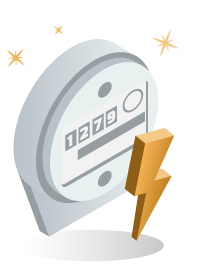What is an EV Tariff? Our Comprehensive Guide

As the world fights climate change and electric cars become a more common occurrence on our streets, we need a way of charging them that doesn’t add too much to our energy bills. In this guide, we go through what an EV tariff is and how it can benefit you as an electric car owner.
Owning an electric car is exciting, and it’s important given the government’s goal for net-zero emissions by 2050 to know everything there is on offer when it comes to EV technology. The biggest challenge for most EV customers is deciding on how best to save on energy costs as well as charging the car while also reducing your carbon footprint.
What Is an EV Tariff?

An EV tariff is a special type of energy tariff offered to customers who have an electric vehicle (EV). Since electric cars need to be charged, EV tariffs are designed to help customers manage the costs of having to plug in their vehicle overnight. This allows customers to deal with the higher energy usage they’ll most likely have when they charge their EV.
In general, there are two types of EV tariffs that are offered:
- Two-Rate Tariffs - this is a tariff that offers two rates of electricity depending on the time of day. The most common two-rate tariff is where a cheaper nightly rate is activated after a certain time in the evening. This is similar to an Economy 7 tariff.
- Single Rate Tariff - this is where you have the same rates for the day or night, but you receive a discount if you have an EV.
Will I Save Money with an EV Tariff?
A lot depends on the model of your EV, the size of its battery, and how often you need to charge it. If you take your average EV, you will likely use up around 35 to 40 kilowatt hours to charge it fully. Depending on your current tariff, those kilowatt hours will be multiplied by your rate to give you your total bill.
How is my energy bill calculated?
All energy bills in the UK are calculated based on your usage. If you use more energy, your bill will be higher, and if you use less, then it will be lower. You are billed on two energy rates: a standing charge, a daily cost for having your energy connected to your property, and a unit rate, where you pay for each kilowatt hour (kwh) you consume.
For example, with an electricity contract, if you have a standing charge of 40p per day and a unit rate of 7p per kwh and you use 242 kwh during the month, your bill will be calculated like this:
Standing Charge: 30 days x 40p = £40.27
Unit Rate: 242 kwh x 7p = £16.94
So your total bill will be £57.21 for your electricity and these rates will normally include the VAT at 5%.
The biggest saving when having an EV is not having to pay for petrol or diesel when you run out of fuel. Given that most customers spend between £60 to £80 on fuel during the month, you will most likely save on having an EV tariff when you buy an EV.
Before the energy crisis, the average EV Tariff added around £2 a week to charging an EV. Although this has now increased to around £8 a week and likely to increase even more owing to the ongoing energy crisis, you can save massively by not using fuel.
There is also the possibility of lowering your energy bill by not charging at home by using either free or subscription-based EV charging points.
Can I Choose Any Supplier for My EV Tariff?

Since it’s very difficult to compare EV tariffs, you will generally have to be an existing customer of your chosen supplier to be able to benefit from an EV tariff that they have to offer. An EV tariff will usually be your main energy tariff with a supplier and it would not only be applied to charging your EV.
Most EV tariffs are also electric only, meaning that a dual fuel tariff option is not widely available. This means that you might have to look for a separate gas tariff with either the same supplier or a different supplier.
How Do I Find the Cheapest EV Tariff?

Unfortunately, you cannot compare EV tariffs through price comparison companies or websites. This is because EV tariffs are complex and depend on a number of factors with each supplier. Also, a great number of EV tariffs are still in development and a lot of those on offer are trials.
You will have to do your own research to make an accurate comparison for your EV tariff. Here are a few things you should consider:
- How much electricity does your EV need
- Consult the rates and work out how much you would pay
- Work out the difference between an EV tariff and a regular one
You will need to take account of how long it takes your EV to charge and work out how much electricity in kilowatt hours is required to get it to full charge.
Do I Need a Smart Meter for an EV Tariff?

You will need to have a smart meter installed at your property in order to take advantage of an EV tariff. This is because a supplier will have to keep track of the energy you use during the night in order to offer you the right rates. Fortunately, you can get a smart meter installed for free from virtually any supplier that you sign up to, and you can request a free one to be installed for you.
Which Suppliers Offer EV Tariffs?
There are a number of EV tariffs that are available on the market from a number of different suppliers. Here’s a quick list showing the EV tariffs that are currently on offer:
| Tariff Name | Supplier |
|---|---|
| GoElectric 35 | EDF Energy |
| Octopus Go | Octopus Energy |
| Octopus Agile | Octopus Energy |
| Intelligent Octopus | Octopus Energy |
| Tide 2023 | GE UK |
| GoElectric 98 | EDF Energy |
| Drive | OVO Energy |
| Green Driver 5-Hour | Good Energy |
| SmartPower | Scottish Power |
| Electric Drivers | British Gas |
| Green Driver 7-hour | Good Energy |
| Charge and Drive | Shell Energy |
You can compare the EV tariff rates on the suppliers’ website to get a good idea of what you can expect for your EV.

How Can I Sign Up to an EV Tariff?
Signing up for an EV tariff is just like signing up for a regular one, however you do have to go directly to your supplier in order to sign up. If you are an existing customer, you can ask your energy supplier to switch you over to an EV tariff but make sure you don’t have to pay an exit fee before you switch. If you are a new customer, you will have to sign up to a regular tariff with the supplier and then sign up for an EV tariff.

